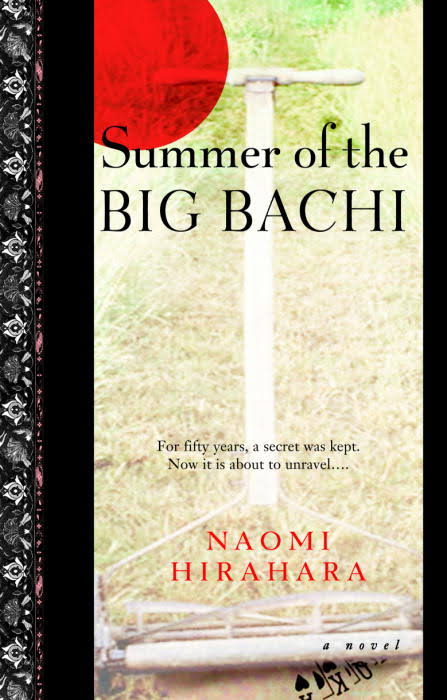Summer of the Big Bachi (book)
Creators: Naomi Hirahara
Mystery novel by Naomi Hirahara that was the first to feature her Kibei hibakusha (atomic bomb survivor) gardener protagonist Mas Arai.
As the novel begins, it is June 1999 and the semi-retired Mas has his routine interrupted by two visitors from Japan who are both looking for atomic bomb survivors they suspect Mas knows: a nosy investigator named Shuji Nakane who is looking for a fellow Kibei named Joji Haneda and a young journalist named Yuki Kimura, who is searching for his grandfather Riki Kimura. Though he doesn't tell them, Mas did know both men, and their inquiries bring back painful memories of the atomic bomb that he would just as soon keep hidden. But when Joji's girlfriend is murdered and Yuki is arrested for the crime, Mas is forced to take action to unravel the crime which turns out to hinge on the tangled connections between the three old acquaintances. The title refers to the "bachi"—a Japanese term for the cosmic retribution that results from one's misdeeds—that prove key to unraveling the mystery.
As the first book in the "Mas Arai Mysteries" series, Summer of the Big Bachi introduces the other key characters besides Mas, including his close gambling buddy Haruo, his straitlaced Nisei friends Tug and Lil Yamada, and Wishbone Tanaka, the proprietor of a lawnmower shop where the old gardeners congregate. The book has an unusual structure—the core mystery is unveiled halfway through the book, introducing further questions that are answered at the end—and moves back and forth between the summer 1999 present of the book and the difficult World War II years.
As with all the Mas Arai books, Bachi is dotted with historical references that include a Heart Mountain reunion ; tensions between Tug, a veteran of the 442nd Regimental Combat Team , and Wishbone, a no-no boy and brother of a draft resister ; the internment of Japanese Latin Americans ; Evergreen Cemetery and the Nisei veterans memorial there; Nisei women at the Arkansas concentration camps who entertained Nisei soldiers training at Camp Shelby ; and the Redress Movement .
Followed by Gasa-Gasa Girl (2005)
| Author | Naomi Hirahara |
|---|---|
| Pages | 287 |
| Publication Date | 2004 |
For More Information
Author website: http://www.naomihirahara.com/ .
